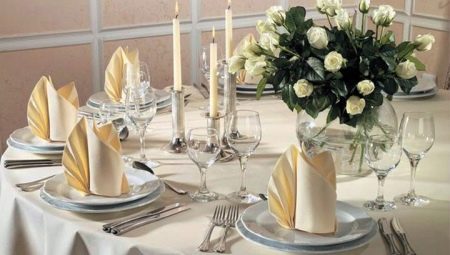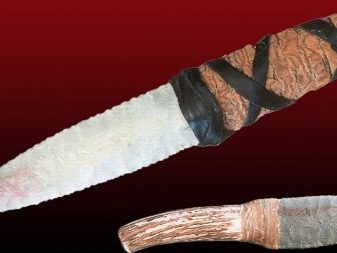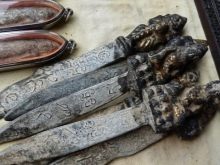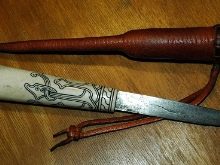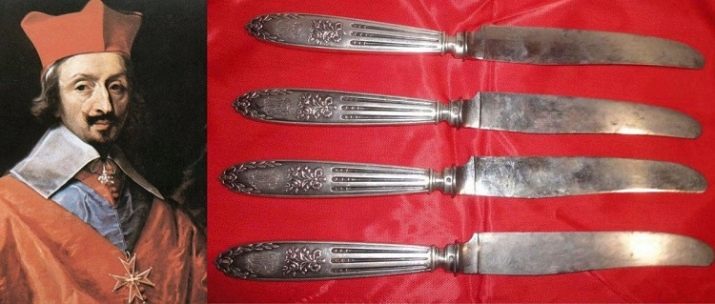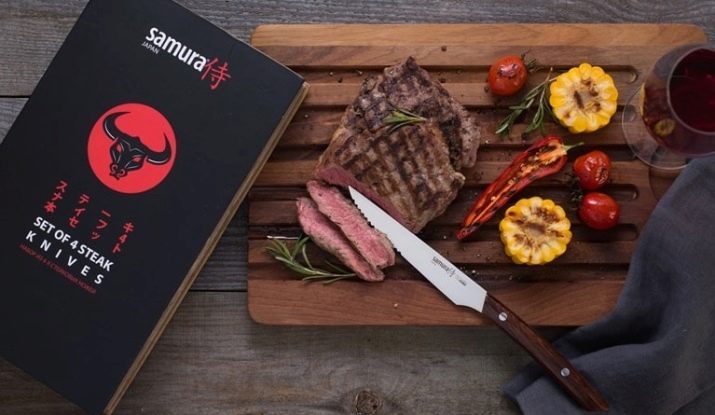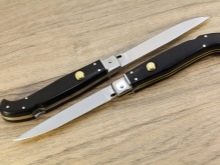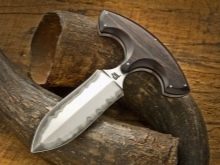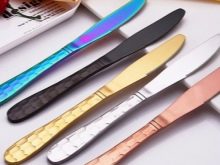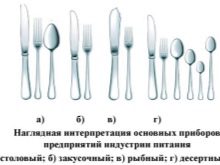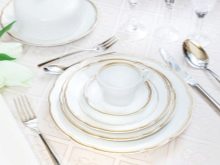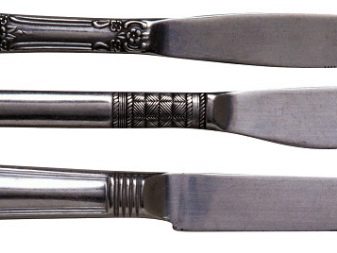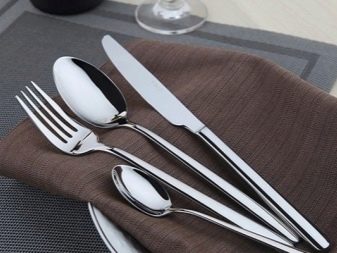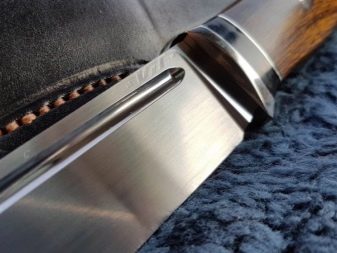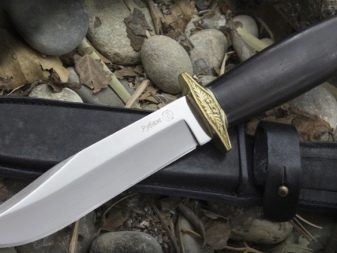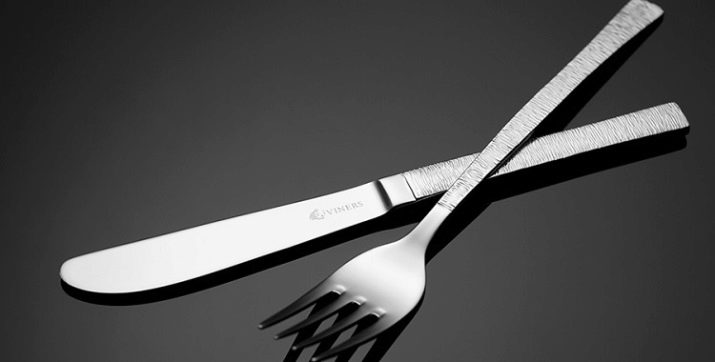The history of the instrument begins with the Paleolithic era, the Stone Age. The first blades were made of stone plates for use in hunting as weapons, as well as in times of war. They are also widely used in cooking.
Story
Over time, for ease of use, wood or bone handles were attached to the implements. Wooden handles have their origins since the time of the Vikings, such a handle did not burn the hand during severe frosts and did not slip when processing animal carcasses. With the development of man, mastering the art of metalworking, bronze, copper, gold products appeared. The latter were used in performing various rituals. Cutlery made of silver or gold is hygienic, they do not rust, silver has disinfecting properties.
In the Iron Age knives made of iron appeared. They were quite diverse, there were wavy and sickle-shaped options. Knives always harbored a mystical sense, it gave rise to omens and superstitions. So, in some countries it is not customary to give a knife, and in Japan, on the contrary, a gift in the form of a blade means wishing good luck and protection from negative factors.
Such tools were used in ceremonies, as well as in mourning ceremonies, so knives were often found in ancient tombs.
In Russia and in European countries, the knife was an attribute of a free person, because only a person not burdened with slavery could carry a knife. Until the 17th century, knives were sharp. But there is a legend about how a table knife with a rounded tip appeared. Cardinal Richelieu was rather squeamish and very picky about food. Once, during a reception, one of the guests began brushing his teeth with a sharp tip after dinner, which caused the cardinal to be extremely indignant.
To avoid such scenes at his desk, he ordered all the knives in the house to have the blades rounded. Residents of France have adopted such innovation as the last word of fashion, and the further spread of cutlery with a rounded tip was only a matter of time. Mass production of knives was established by the end of the XIX century. At the moment, the knives have a different design, so choosing the right knife is not so difficult.
Features
The features of the table knife are the rounded blade as well as the rounded end. Rounded blade does not sharpen. Such blunt blades are necessary for safety at the table, as well as in order to preserve the surfaces of the dishes. For the convenience of cutting meat products and vegetables on the blade do notches.
Kinds
According to the type of construction, the knives can be foldable, with a fixed blade, pointed, with replaceable blades, skeletal. Folding hide the blade in the handle, when using the locking mechanism keeps the blade in working condition. Products with a fixed blade have a strong connection of the blade with the handle. Staples have a corkscrew appearance. Skeletal are made entirely of steel, while the handle is often wrapped with a cord or other anti-slip material.
Classification is also carried out by purpose of products. There are knives for tourism and hunting, weapons, universal, kitchen and special purpose. Knives for hunting and tourism can be used both to attack animals and skinned carcasses. Guns can be used for sapper work, in battles, when throwing, for self-defense.
Universal includes a wide selection of folding knives, stationery of second-grade steel, knives for everyday wear, used in everyday life.
Consider the most popular knives for home use, it can be dining, fish, snack bars, dessert, fruit, steak, butter, cheese, etc.
- Table knives are one of the main serving knives, designed for second courses, length about 20 cm.
- Fish has a wider blade, resembling a spatula, designed for fish dishes.
- Snack is used for snacks, it is usually put to the right of the fish knife.
- Dessert for cakes, various pies has a pointed tip.
- Fruit looks similar to dessert, but a little shorter.
- The knife for steak is used for meat, meat dishes. Has a sharp end of the blade, slightly raised up, length about 22 cm.
- A butter knife is used to spread both butter and jam on bread.
- Cheese has a forked end of the blade, used for slicing cheese.
- Boning allows you to separate the meat from the bones.
- Slicer allows you to thinly chop the meat, sausage.
- Bread is able to cut bread, leaving no crumbs.
- For children, there are special children's knives that are safe to use and meet their intended purpose. They differ in small size, lightness, often multi-colored handles.
Knives from stainless steel are widely used. They are the most durable to use, suitable for daily use. Such products are protected from rust, durable, resistant to temperature changes, do not leave a taste on the products, the appearance remains brilliant even with prolonged use. However, such blades have drawbacks. The main disadvantage is rapid dulling.
They often have to be sharpened, which leads to a thinning of the blade. In pursuit of cheaper production, manufacturers often use low-grade steel, which makes them bend when in contact with products.
Ceramic knives are currently very popular. Although they are very fragile, such products are able to maintain the sharpness of the blade for a long time.
How to choose?
Quality Home Knives must meet some criteria:
- blade and handle dimensions should be 50: 50, or the blade may be slightly longer;
- high-quality device has a hidden nail file, visible only on one side of the blade;
- the blade must be made of good steel, if you bend it, then it must acquire its original shape;
- this blade will not crack and will not become stained with rust;
- a good device must comply with the rules for attaching the blade, it must pass through the handle completely (inexpensive ones usually have a slightly inserted blade into the cavity of the handle);
- the handle can be made of wood, metal or plastic, it should fit the size of your palm and be made of high-quality materials;
- the cost of a set for the house can not be low - high-quality processing of the blade and materials of manufacture are costly.
You can check the quality of steel products in an easy way, you need to breathe on a clean and dry blade, then see how the steam comes off.
If sweat evenly covered the surface of the blade and went smoothly, this indicates that the steel is uniform. Quenching can be estimated by ringing, it is necessary to hang the selected product by the handle and click on the blade with a fingernail. Hardened metal should sound high ping.
Care
If you want to keep the quality and appearance of the product, then It is necessary to pay attention to the recommendations for the care of knives.
- Before first use, rinse the blade with hot water. After application, you must wash the knife with a small amount of detergent, then wipe it towards the blade with a soft cloth.It is not recommended to wash the knives in the dishwasher, as this may dull the blade. Knives should be stored dried.
- Cleaning is done with a bottle cap. It should be dipped in sunflower oil, then in salt and wipe the knife with it. Then rinse the device with cool water and wipe with a cloth. Also use special paste for cleaning. They allow you to keep a brilliant look to all the cutlery in your home.
- Glass or stone cutting boards dull the knives, so it is recommended to use wooden or polypropylene boards. The product must be stored in a separate place from other cutlery. It can be wooden or metal blocks, which are distinguished by their compactness. Or you can use magnetic holders that are conveniently attached to the surface of furniture, walls.
- For sharpening the blade use a grindstone. When choosing a stone, it is necessary to pay attention to the graininess: fine-grained ones are used for dressing knives, medium-grained for processing edges, products of coarse grain are used to correct the angle of sharpening, dressing the shape of the blade. Also use musat, it is intended for editing knives. If these tools are not available, then sandpaper can be used. For ease of use, waterproof emery is recommended, it must be fixed on a flat surface and sharpened.
In the next video you can take a look at the table knives from around the world.
